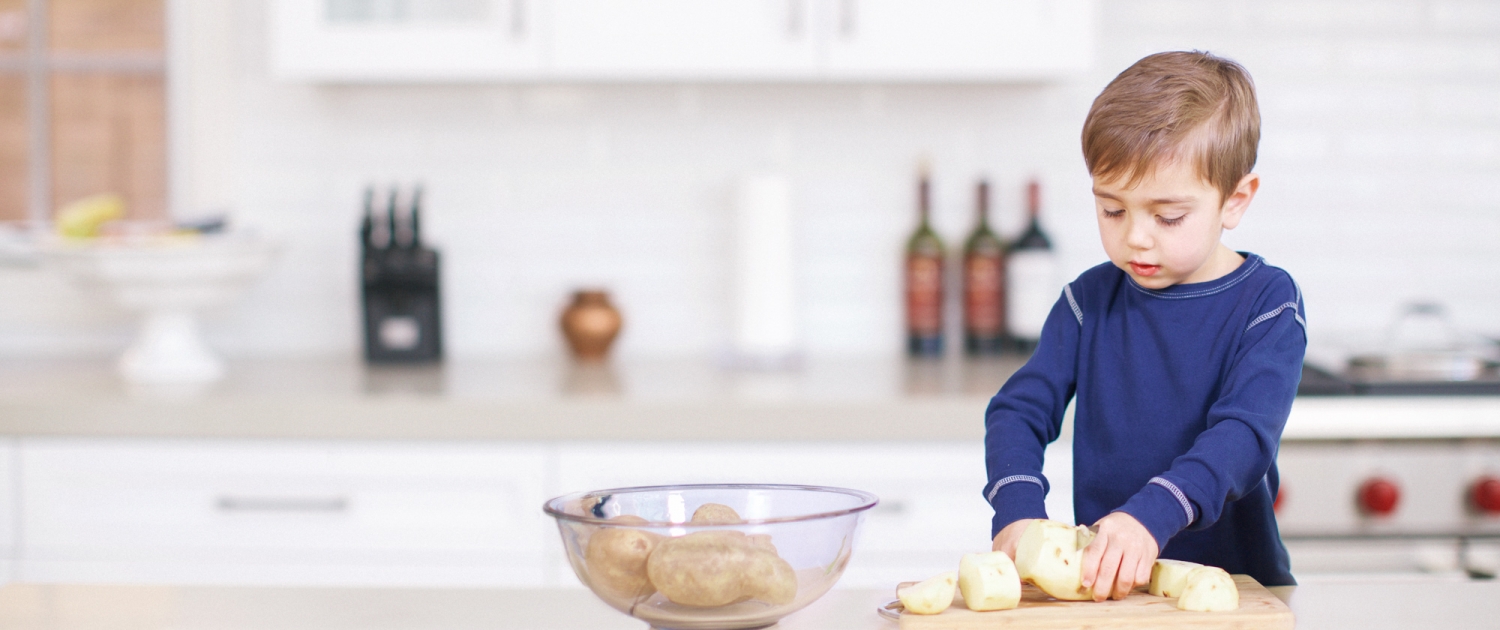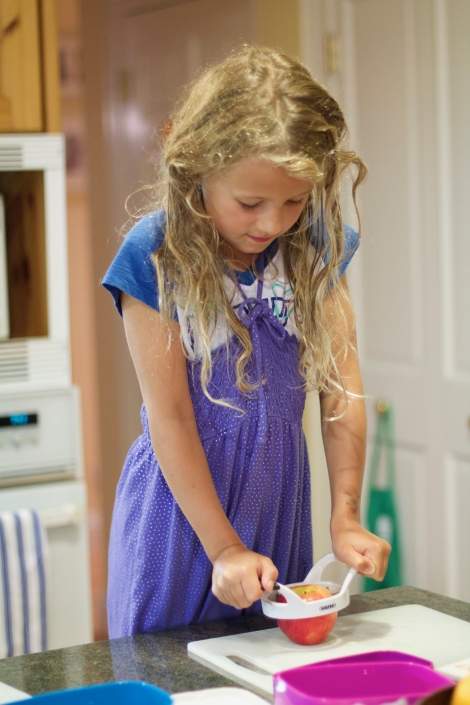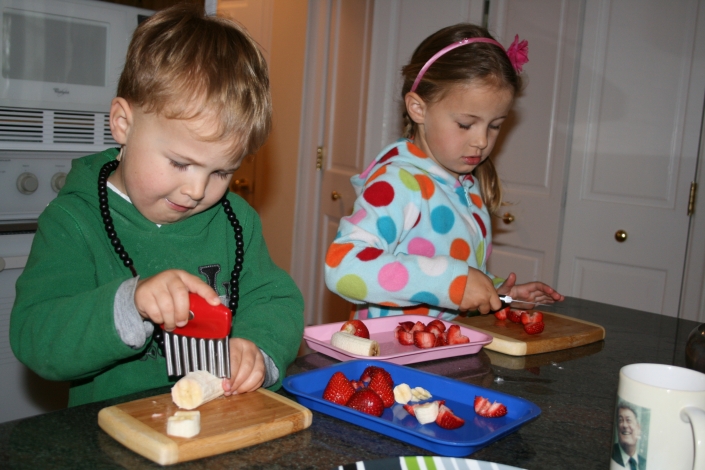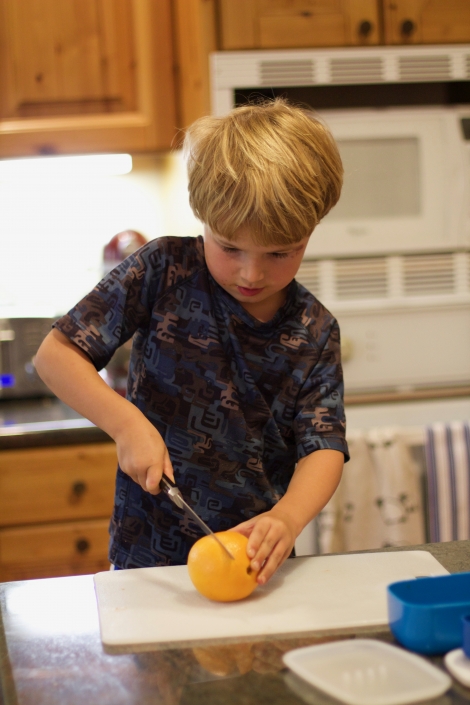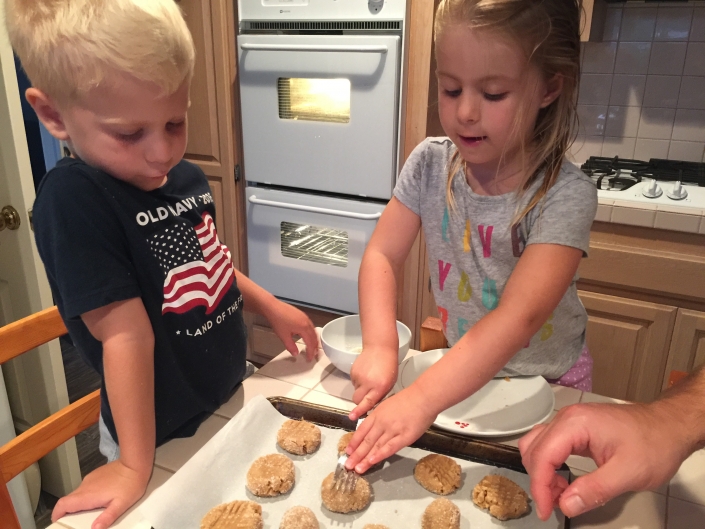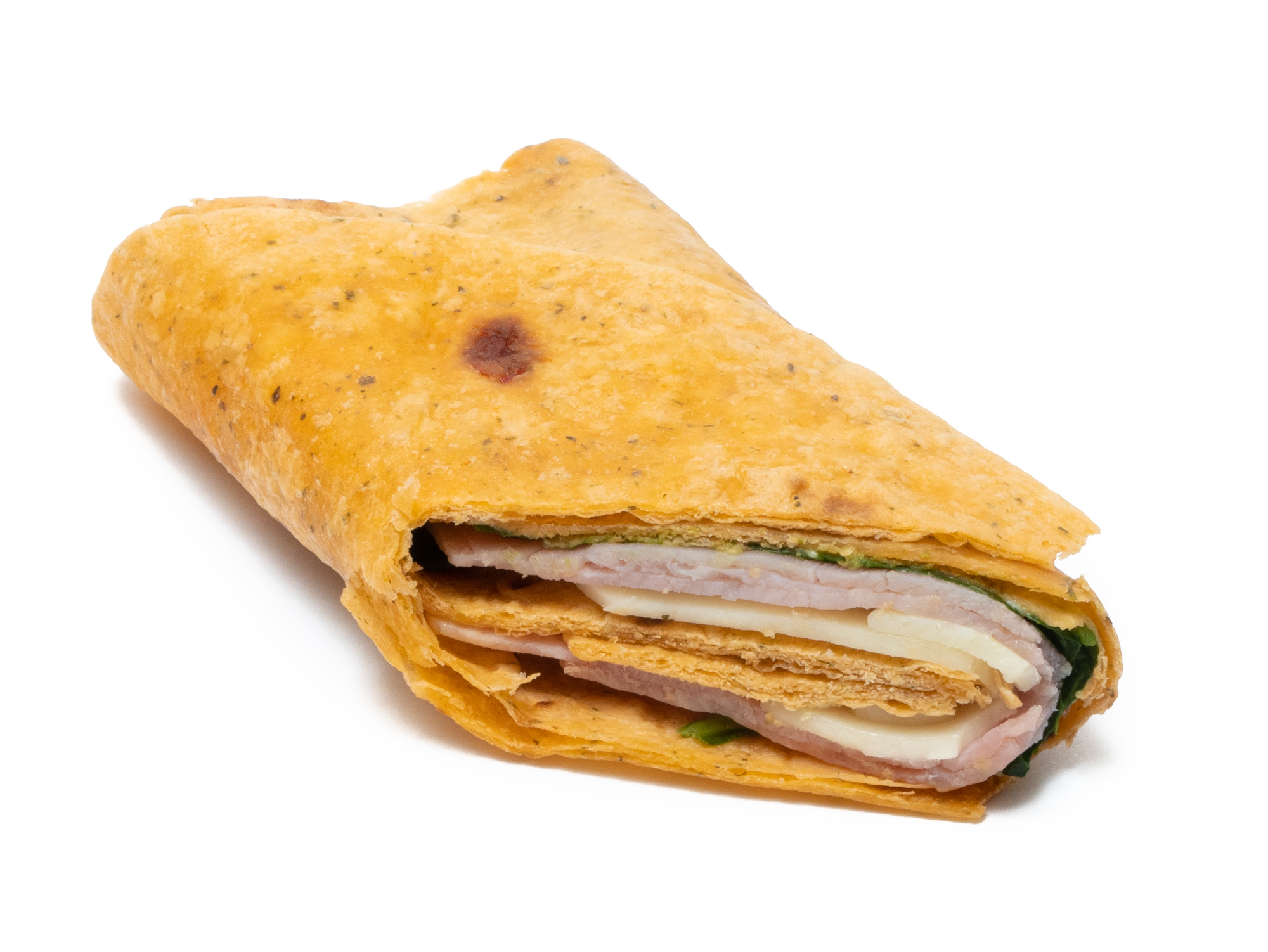Reasonable (yet ambitious!) expectations, from toddler to preschool, and elementary
How much your child can contribute to making lunch depends on his age. If you start early, and especially if your child attends a Montessori preschool (where we support children learning to be independent and do many things for themselves), here is what you can aim for, by age:
Toddler and young preschool (ages 2-3)
Parent does most of the work, with targeted help by the toddler, who can do some of the following things:
- Spread butter or cream cheese or jam on bread with butter knife
- Place sandwich meats and cheese on sandwiches
- Cut strawberries or bananas with a butter knife
- Peel an egg or a banana
- Pack food into a lunchbox (pre-measured by parent)
- Carry own lunchbox into preschool
Preschool/kindergarten (ages 4-5)
Parent provides food, prepares supplies, and supervises, while child increasingly does the work, as skills develop. Preschool children continue with the work of toddlers, and take on more work over time:
- Wash and dry fruit and vegetables
- Peel and cut vegetables and fruit (start simple—e.g., peeling carrots, cutting cucumbers with a serrated child-friendly knife, preparing apples with apple cutter—and progress to harder items over time)
- Put right amounts of fruit, vegetables, or left-overs into serving containers
- Assemble sandwiches from foods set out by parent (e.g., put mayo, ham, cheese on bread, cut bread into pieces)
- Fill water bottle with water and ice from fridge
- Pack lunchbox (including putting ice packs into outer, insulated container)
Elementary (ages 6 and up)
Elementary school children gradually take over full responsibility for making lunches. Parent’s role is to ensure healthy foods are accessible for them to pack—and, by around age 9, remove themselves from the lunch process, so it becomes the child’s job. Children do most of the work, including the following:
- Identify foods needing to be replenished and adding them to a grocery list–or even take ownership of picking things out at the grocery store
- Decide when to pack the school lunch (the night before—or get up earlier in the morning); parent gives guidance when things don’t work out (e.g., require a child who dawdles in the morning to pack their school lunch at night)
- Deciding what to have for lunch at school (from healthy choices made available by parents, accessible in pantry and fridge)
- Prepare lunch in its entirety. This may include packing separate containers with a snack for the afternoon, too.
- Unpack lunchbox when returning from home, throwing food into trash and putting containers into the dishwasher or washing them

